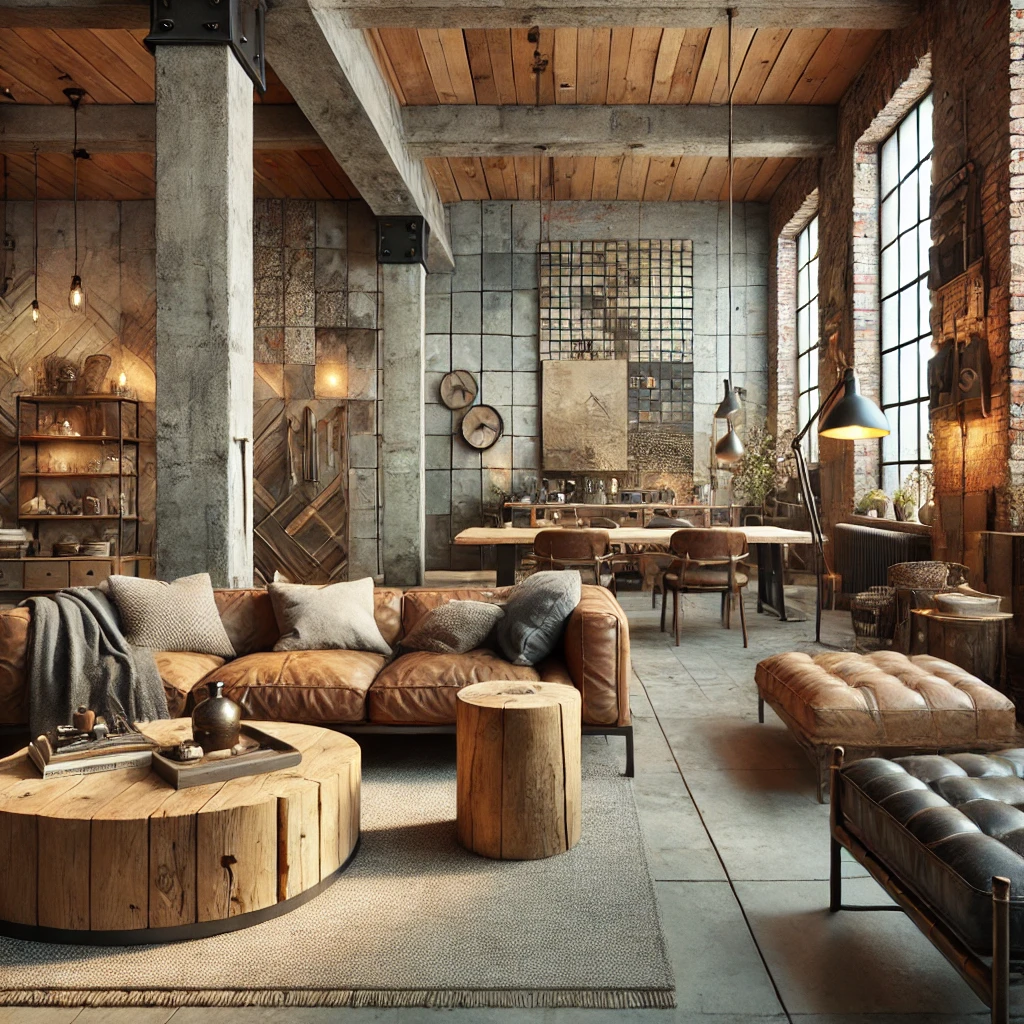
The Rustic and Industrial Style
The rustic and industrial styles bring together two distinct approaches in modern interior design that complement each other beautifully.
While rustic style emphasizes naturalness, warmth, and tradition, industrial style highlights raw materials, clean lines, and functionality. The combination of these two styles creates spaces that are both aesthetically pleasing and comfortable, inviting environments.
In this article, we will explore the key features of rustic and industrial styles and how you can incorporate them into your interiors.
1. Natural Materials and Raw Structures
Rustic style is known for its extensive use of natural materials. Wood, stone, and iron are the foundational elements of this style. Wooden beams, stone walls, and natural textures add warmth and authenticity to rustic spaces.
Industrial style, on the other hand, showcases structural elements like exposed concrete, metal surfaces, and visible pipes. In the fusion of these two styles, natural wood surfaces are combined with industrial elements like metal or concrete, creating a striking contrast.
2. Simple and Functional Furniture
Both rustic and industrial styles favor simple and functional furniture designs. Rustic furniture is typically made from solid wood, leather, and natural fabrics, while industrial furniture is crafted from materials like metal, steel, and concrete.
In the combination of these styles, elements like wooden dining tables, metal chairs, or leather sofas are used together to achieve a balanced and stylish look.
The functionality of the furniture is also a priority, ensuring that living spaces are both aesthetically pleasing and practical.
3. Color Palette and Texture Usage
Rustic and industrial styles prioritize natural and neutral tones. In addition to natural materials like wood and stone, neutral colors such as gray, brown, black, and white are frequently used.
This color palette gives the space a calm and serene atmosphere. Textures play a significant role in this style as well.
The natural texture of wood, the rough surface of stone, and the cold hardness of metal create a tactile richness in the spaces.
4. Open-Plan Spaces
Industrial style often favors open-plan spaces. This style is characterized by large, open areas, high ceilings, and large windows. Rustic style, in turn, adds warmth and coziness to these spaces.
In an open-plan living area, rustic wooden furniture and industrial metal accessories can be used together to create an environment that is both airy and warm.
5. Lighting and Decoration
Lighting elements are also crucial in the fusion of rustic and industrial styles. Metal pendant lights are a staple of industrial style.
Meanwhile, large chandeliers or lamps made from natural materials used in rustic style add character and depth to the space. In decoration, antique objects, accessories inspired by old factories, and handmade decorative items are preferred.
